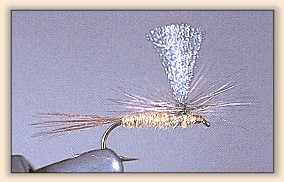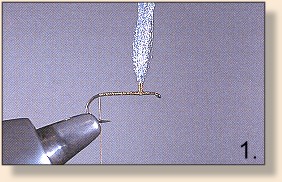
1. ...form a Z-lon wing post that is one shank
length high.
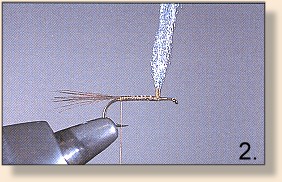
2. Wrap thread back to the starting point. Select a large
dun hackle feather, and prepare it for use as tailing
materials...Tear about twenty fibers (more for a larger
hook, less for a smaller one) free, stack or otherwise
even the tips, and tie in a tail one shank length long.
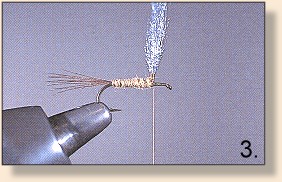
3. Dub olive fur onto the thread, forming a tapered
"rope"...Wrap the dubbing forward, to the wing post.
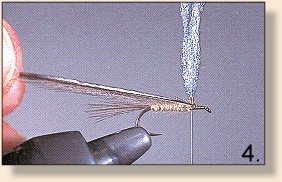
4. Using the gape of the hook as a gauge, select one dun
hackle feather one gape wide. Tie in by the butt at
the wing post.
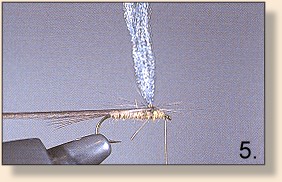
5. Now, dub a bit more beaver or superfine fur onto
the tying thread. The intent this time is to reverse the
taper of the dubbing, making it thicker where the thread
meets the hook, and thinner as the dubbing goes down the
thread. In addition, you want the taper to be more abrupt.
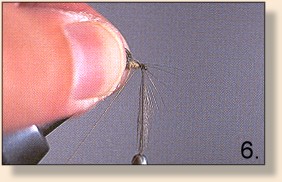
6. Wrap a few turns of the dubbing behind the post,
beginning to form the thorax. Release the bobbin,
letting the thread hang, and wrap the hackle around
the wing post.
7. Hold the hackle tip with your right hand, grasp the bobbin
with your left hand, and bring the dubbing forward, under
the horizontal hackle fibers and over the tip of the hackle feather,
securing the feather to the shank of the hook with three to four
wraps and forming a cone-shaped head.
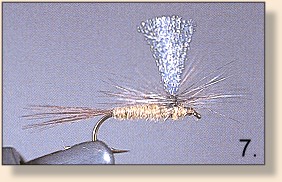
8. Make a few wraps at the index point to secure things,
whip finish, and cement. Also put a dab of cement on
the post, letting it seep into the wing wraps - it's
a worthwhile bit of insurance.

